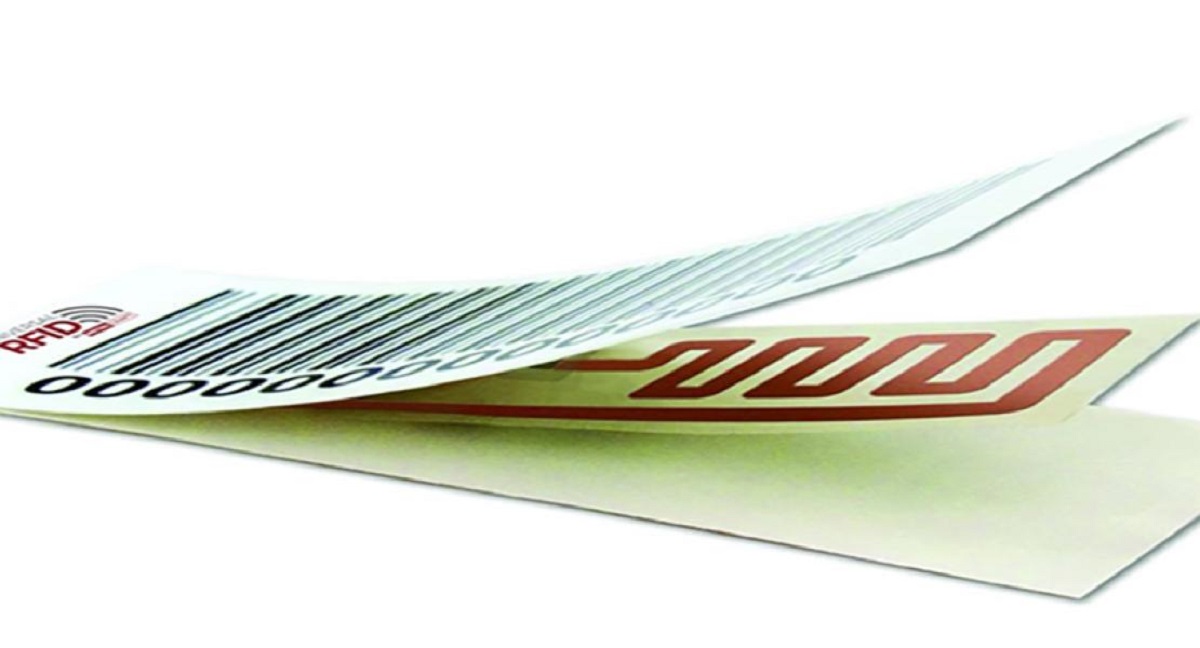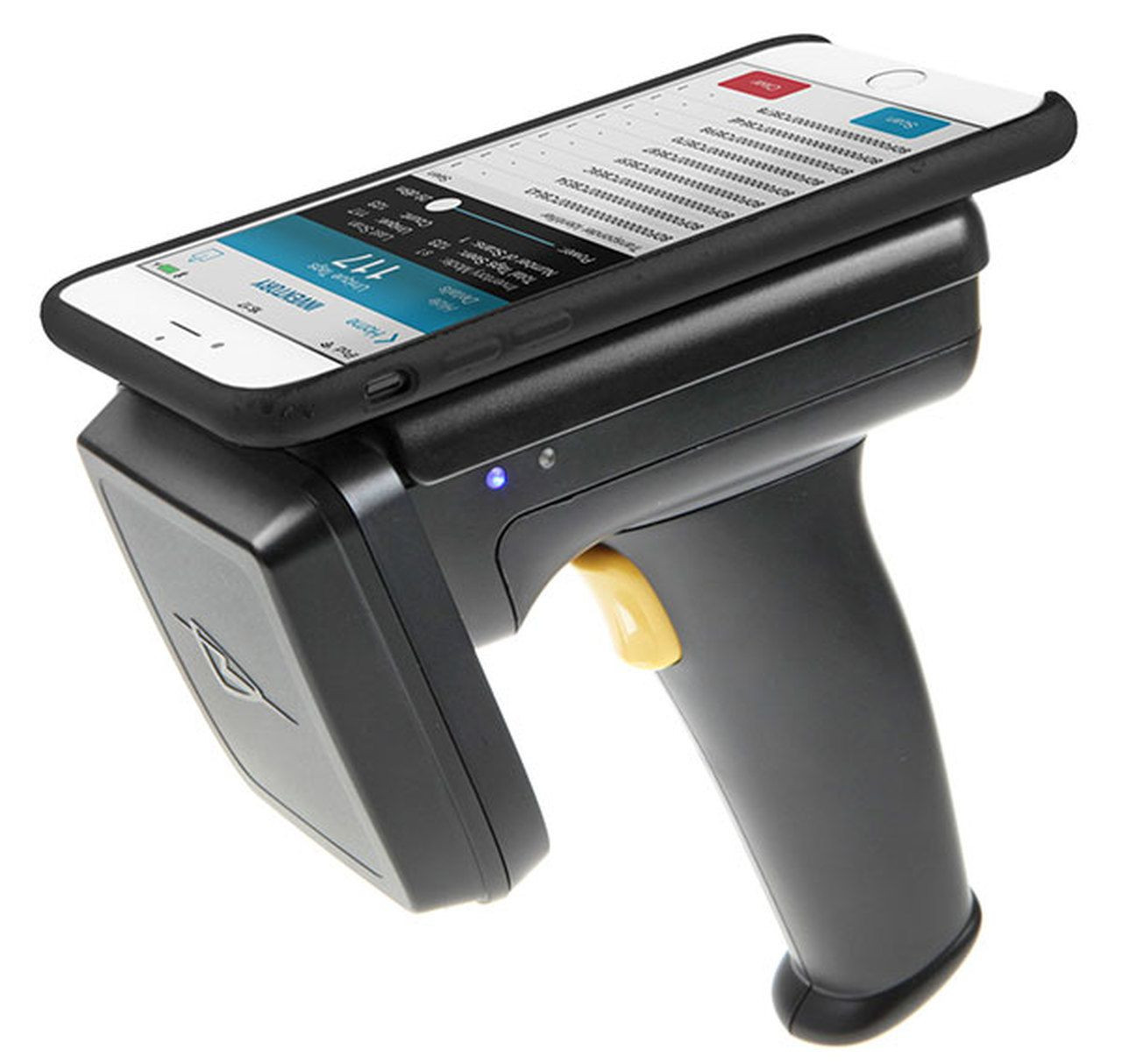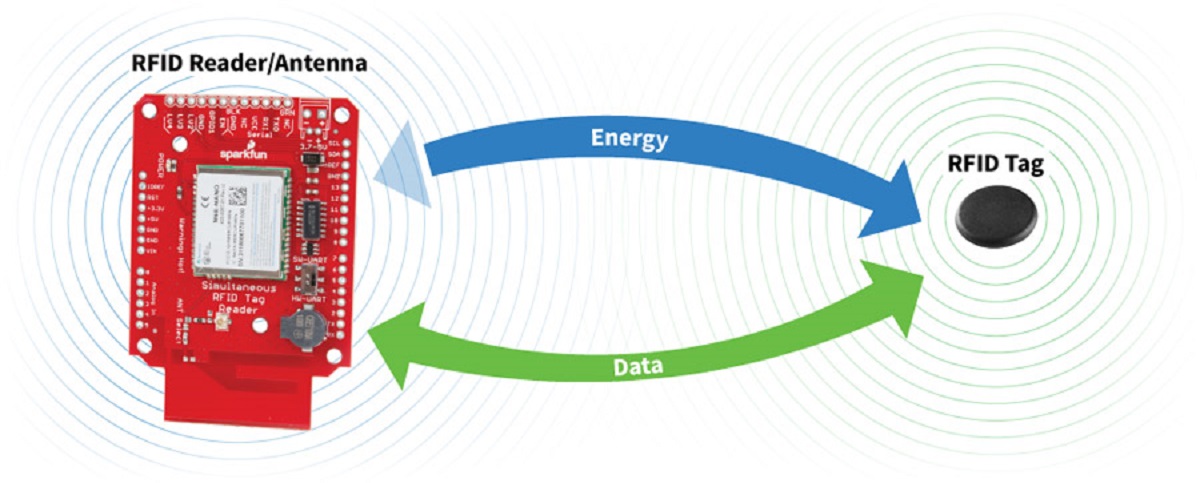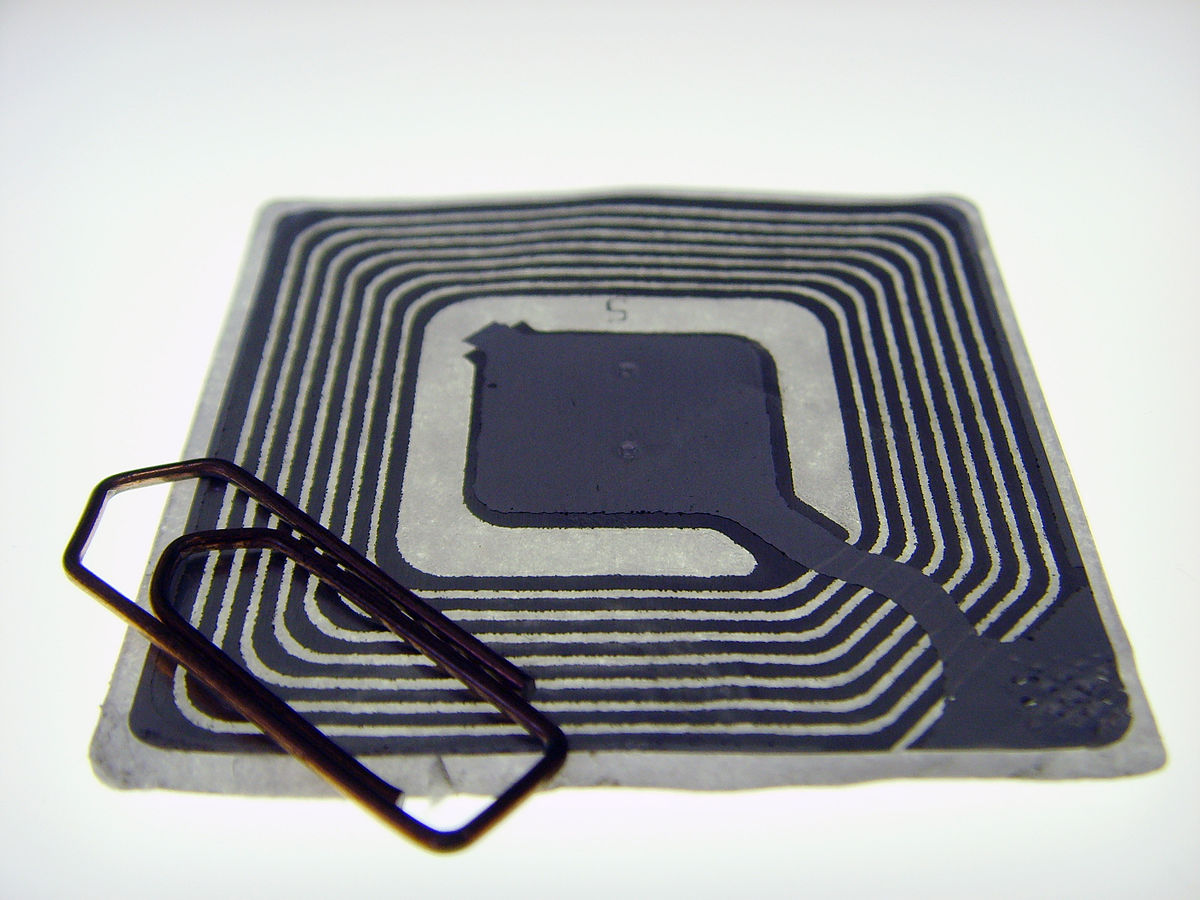Introduction
Radio Frequency Identification (RFID) is a technology that has gained widespread popularity in recent years due to its ability to track and identify objects wirelessly. It revolutionizes the way businesses manage their inventory, supply chain, and logistics operations. RFID technology utilizes electromagnetic fields to automatically identify and track tags attached to objects. These tags contain electronically stored information that can be retrieved and processed by RFID readers.
The use of RFID technology has significantly improved efficiency and accuracy in various industries such as retail, transportation, healthcare, and manufacturing. It provides real-time visibility into the movement and status of objects, enabling organizations to streamline their operations and make data-driven decisions. With an increasing demand for efficient asset management and inventory tracking, RFID has emerged as a game-changer in the digital era.
The implementation of RFID technology offers numerous benefits, including enhanced visibility, reduced manual labor, improved data accuracy, and increased profitability. However, it also comes with its fair share of challenges and concerns, such as data security, tag interference, and high implementation costs. Overcoming these hurdles requires careful planning, robust infrastructure, and strategic utilization of RFID systems.
In this article, we will explore the intricacies of RFID technology, delve into its components and functionality, and discuss its diverse applications across various industries. We will also highlight the advantages and potential drawbacks of using RFID technology to give you a comprehensive understanding of its impact in today’s fast-paced business environment.
Explanation of RFID Technology
RFID technology is based on the use of electromagnetic fields to transmit data wirelessly between RFID tags and readers. These tags consist of a microchip that stores data and an antenna for communication. The RFID reader emits radio waves, which power the tags and collect the transmitted data. Unlike barcodes, which require line-of-sight scanning, RFID technology allows for contactless identification and tracking of objects in real-time.
RFID systems consist of three main components: RFID tags, RFID readers, and a backend system for data management and processing. The tags can be either passive or active. Passive tags are powered by the electromagnetic energy emitted by the RFID reader, while active tags have their own power source. RFID readers, also known as interrogators, are responsible for communicating with the tags and collecting the data stored within them. The backend system enables the storage, analysis, and utilization of the collected RFID data.
RFID tags come in different forms, such as labels, cards, or even implantable chips. Each tag contains a unique identifier that can be associated with specific information about the tagged object, such as product details, manufacturing date, or location. Depending on the application and industry, RFID tags can have varying read ranges, from a few centimeters to several meters.
When an RFID reader emits radio waves, the tags within its range detect the signal and respond by transmitting their stored data back to the reader. This data exchange is done through electromagnetic waves, allowing for fast and accurate identification of multiple tags simultaneously. The RFID reader captures the transmitted data and forwards it to the backend system for further processing.
RFID technology finds extensive usage in various industries. In retail, RFID tags are attached to products to enable efficient inventory management and prevent theft. In supply chain and logistics, RFID systems track the movement of goods, providing real-time updates on their location and status. In healthcare, RFID technology is used to track medical equipment and ensure efficient patient care. These are just a few examples of how RFID technology is transforming everyday business operations.
Overall, RFID technology offers an efficient and reliable solution for tracking and identifying objects in real-time. Its contactless nature, along with its ability to handle large volumes of data, makes it a valuable tool in streamlining operations and improving overall efficiency in various industries.
Components of an RFID System
An RFID system consists of several key components that work together to enable the identification and tracking of objects. Understanding these components is essential for implementing a successful RFID solution. The main components of an RFID system include RFID tags, RFID readers, and a backend system for data management.
RFID tags, also known as transponders, are the core of an RFID system. These tags contain a microchip and an antenna that enable communication with RFID readers. Tags can be either passive or active. Passive tags draw power from the radio frequency signals emitted by RFID readers, while active tags have their own power source and can actively transmit data. Tags can be attached to or embedded within objects to track and identify them.
RFID readers, also called interrogators, are devices that emit radio frequency signals and collect data from RFID tags. These readers can be fixed or handheld, depending on the application. Fixed readers are typically installed at specific locations and are used for continuous monitoring, while handheld readers provide mobility and flexibility. RFID readers convert the received radio frequency signals into digital data that can be processed and utilized by the backend system.
The backend system consists of software and hardware components that facilitate the management of RFID data. This system includes a database for storing tag information, middleware for data processing and integration, and user interfaces for data visualization and analysis. The backend system is responsible for managing the entire RFID infrastructure, enabling businesses to access real-time information about tagged objects, track inventory, and make informed decisions.
To establish communication between tags and readers, RFID systems utilize radio frequency waves. When an RFID reader emits a radio frequency signal, the tags within its range receive the signal and respond by transmitting their stored data back to the reader. The reader captures the transmitted data and sends it to the backend system for processing and storage. This bidirectional data exchange enables the identification and tracking of objects in real-time.
In addition to these main components, other elements can enhance the functionality of an RFID system. Antennas, for example, play a crucial role in transmitting and receiving signals between tags and readers. Depending on the application, different types of antennas can be used to optimize the read range and reliability of the RFID system. Additionally, integration with existing systems such as enterprise resource planning (ERP) software or warehouse management systems (WMS) can further enhance the capabilities and streamline operations.
Understanding the components of an RFID system is vital for successful implementation and utilization of this technology. With the right combination of tags, readers, and a robust backend system, businesses can harness the power of RFID to improve efficiency, streamline operations, and gain valuable insights into their processes.
Types of RFID Tags
RFID technology offers various types of tags, each designed for specific applications and environments. These tags differ in their form factor, read range, power source, and memory capacity. Understanding the different types of RFID tags is essential for selecting the right tag that meets the requirements of a specific use case. Here are some common types of RFID tags:
- Passive RFID Tags: Passive RFID tags do not have their own power source and rely on the radio frequency energy emitted by RFID readers to power up and transmit data. These tags are cost-effective and suitable for applications where the reading distances are relatively short. Passive RFID tags are commonly used in retail, supply chain, and asset tracking.
- Active RFID Tags: Active RFID tags have their own power source, usually a battery, allowing them to actively transmit data. These tags have a longer read range compared to passive tags and are ideal for applications that require real-time tracking of objects over large areas. Active RFID tags are commonly used in transportation, logistics, and vehicle tracking.
- Semi-Passive RFID Tags: Semi-passive RFID tags, also known as battery-assisted passive (BAP) tags, have a small battery to power certain functionalities like onboard sensors or increased read range. These tags combine the benefits of both active and passive tags, making them suitable for applications where a longer read range or sensor data collection is required, such as temperature-sensitive goods or healthcare monitoring.
- RFID Labels: RFID labels are adhesive tags that can be easily attached to various surfaces, such as products, packaging, or documents. These labels have a flexible form factor and can come in different sizes and shapes. RFID labels are widely used in retail for inventory management, anti-counterfeiting measures, and reducing checkout times.
- RFID Cards: RFID cards are similar to traditional identification cards but equipped with an embedded RFID tag. These cards are commonly used in access control systems, public transportation, and payment applications. They provide a convenient and contactless way to authenticate and authorize individuals.
- RFID Implants: RFID implantable tags, often in the form of microchips, are designed to be inserted under the skin of living organisms. These tags are used in animal tracking, pet identification, and even for medical purposes, such as storing patient records or monitoring vital signs. RFID implants offer permanent identification and can be read with compatible readers.
Choosing the right type of RFID tag depends on factors such as the desired read range, power requirements, environmental conditions, and the specific use case. By understanding the different types of RFID tags available, businesses can make informed decisions and leverage the benefits of RFID technology to enhance their operations and efficiency.
How RFID Tags Work
RFID tags are the core components of an RFID system and play a crucial role in the identification and tracking of objects. Understanding how RFID tags work is essential for grasping the functionality of RFID technology. Here is an overview of the working principles of RFID tags:
RFID tags consist of a microchip and an antenna. The microchip contains a unique identifier and, in some cases, additional memory for storing data. The antenna allows the tag to communicate with RFID readers by transmitting and receiving radio frequency signals. The interaction between the tag and the reader occurs through a process called electromagnetic coupling.
When an RFID reader emits a radio frequency signal, it creates an electromagnetic field. As the field reaches the vicinity of an RFID tag, the tag’s antenna captures the energy from the electromagnetic field. This energy is used to power up the tag’s microchip, activating it for communication.
Once powered, the RFID tag’s microchip sends a response signal back to the reader. The response signal contains the tag’s stored information, such as its unique identifier or additional data. This communication between the tag and the reader happens through modulating the electromagnetic field generated by the reader.
The RFID reader detects and decodes the response signal from the tag’s microchip. It then processes the received data and, depending on the application, may perform actions based on the tag’s information, such as updating inventory records or triggering specific operations.
The range at which RFID tags can be read is dependent on the power emitted by the reader and the sensitivity of the tag’s antenna. The read range of RFID tags can vary from a few centimeters to several meters, depending on the specific technology and frequency used.
There are different types of RFID tags, including passive, active, semi-passive, and various form factors like labels, cards, and implants. Each type of tag has its own characteristics and application suitability. Passive tags rely on the power provided by the RFID reader, while active tags have their own power source, typically a battery. Semi-passive tags combine characteristics of both passive and active tags.
Overall, RFID tags work by utilizing radio frequency signals to communicate with RFID readers. The tags are powered by the energy from the reader, transmit their identifier or additional data in response, and then the reader captures and processes that information. This enables efficient and contactless tracking and identification of objects, revolutionizing various industries such as retail, logistics, and healthcare.
Applications of RFID Technology
RFID technology has found widespread adoption in various industries due to its versatility and ability to streamline operations. From retail to healthcare, logistics to manufacturing, RFID offers numerous applications that enhance efficiency and provide valuable insights into processes. Let’s explore some of the key areas where RFID technology is making a significant impact:
- Retail: In the retail sector, RFID technology is widely used for inventory management, supply chain optimization, and loss prevention. RFID tags attached to products enable real-time tracking of inventory, allowing retailers to accurately monitor stock levels and automate replenishment processes. Additionally, RFID technology helps reduce theft and improve the customer shopping experience by enabling faster and more accurate checkout processes.
- Logistics and Supply Chain: RFID plays a crucial role in logistics and supply chain management. By tracking goods, pallets, and containers with RFID tags, companies can gain real-time visibility into the movement of their assets, optimize inventory management, and improve overall efficiency. RFID technology facilitates automated data capture, reducing manual errors and enhancing the accuracy of supply chain processes.
- Healthcare: In the healthcare industry, RFID technology helps improve patient safety, asset tracking, and inventory management. RFID tags can be used to track medical equipment, monitor patient flow, ensure medication accuracy, and enhance asset utilization. By leveraging RFID technology, healthcare providers can streamline workflows, reduce costs, and enhance the overall quality of patient care.
- Manufacturing: RFID technology revolutionizes manufacturing processes by enabling real-time tracking of raw materials, work-in-progress, and finished goods. By utilizing RFID tags, manufacturers can enhance supply chain visibility, optimize inventory levels, monitor product quality, and automate production processes. RFID also enables efficient asset tracking, preventive maintenance, and ensures compliance with regulatory standards.
- Asset Management: RFID technology is widely used for asset tracking and management in various industries, including aviation, transportation, and warehousing. By tagging assets such as vehicles, tools, or equipment with RFID tags, businesses can monitor their location, usage, and maintenance schedules in real-time. This enhances operational efficiency, reduces loss, and minimizes downtime.
- Access Control and Security: RFID technology is utilized in access control systems, providing secure and convenient identification and authentication. RFID cards or key fobs can be used for granting access to buildings, rooms, or restricted areas. The contactless nature of RFID technology makes it more convenient than traditional key-based systems and helps enhance security measures.
- Animal and Livestock Tracking: RFID tags are extensively used for animal and livestock tracking in agriculture and veterinary applications. RFID tags attached to animals enable accurate identification, tracking, and management of livestock, ensuring proper healthcare, breeding traceability, and supply chain management within the agricultural industry.
These are just a few examples of how RFID technology is being applied across various industries. From optimizing operations to improving safety and enhancing customer experiences, RFID technology continues to drive innovation and efficiency in diverse sectors.
Advantages of RFID Technology
RFID technology offers numerous advantages over traditional identification and tracking methods. Its versatility and ability to streamline operations have made it a valuable tool across various industries. Here are some of the key advantages of RFID technology:
- Efficiency: RFID technology enables swift and accurate data capture without the need for manual scanning or line-of-sight requirements. This eliminates the time-consuming process of individually scanning items, resulting in significant time savings and increased operational efficiency.
- Automation: RFID technology automates various processes, such as inventory management, asset tracking, and supply chain operations. This reduces human error, increases productivity, and allows employees to focus on higher-value tasks.
- Real-time visibility: With RFID technology, businesses can have real-time visibility into their assets, inventory, and supply chain processes. This enables proactive decision-making based on accurate and up-to-date information, leading to improved operational planning and faster response times.
- Accuracy: RFID technology offers higher accuracy compared to manual data entry or barcode scanning. The risk of human error is significantly reduced, which leads to improved data integrity and more reliable business insights.
- Read range and speed: RFID tags can be read from a distance, even in bulk, and at a higher speed compared to traditional methods. This enables faster and more efficient scanning of multiple items simultaneously, speeding up processes such as inventory counts or shipments.
- Security: RFID technology provides enhanced security features, such as encryption and authentication, to protect data and prevent unauthorized access. This makes it suitable for applications where data privacy and asset protection are critical.
- Scalability: RFID systems can easily scale to accommodate changing business needs and growing operations. Whether it’s adding more tags, readers, or expanding the backend infrastructure, RFID technology can adapt to business growth and evolving requirements.
- Cost savings: While upfront costs for implementing RFID technology may be higher than traditional methods, the long-term benefits outweigh the initial investment. RFID technology reduces labor costs, minimizes losses from theft or misplaced items, optimizes inventory management, and enables more efficient use of resources.
- Sustainability: RFID technology promotes sustainability by enabling businesses to optimize their operations, reduce waste, and lessen their environmental impact. By streamlining processes, RFID technology minimizes the consumption of resources and helps create more sustainable and eco-friendly practices.
These advantages make RFID technology a valuable asset for businesses, offering improved efficiency, accuracy, and visibility. By harnessing the power of RFID technology, organizations can streamline their operations, enhance customer experiences, and gain a competitive edge in today’s fast-paced business landscape.
Challenges and Concerns with RFID Technology
While RFID technology offers numerous benefits, it is not without its challenges and concerns. Understanding these potential issues is crucial for successful implementation and utilization of RFID systems. Here are some of the main challenges and concerns associated with RFID technology:
- Cost: One of the primary challenges of RFID technology is the initial cost of implementation. RFID tags, readers, and backend infrastructure can be more expensive compared to traditional barcode systems. However, the long-term benefits and cost savings often outweigh the upfront investment.
- Data Security: RFID technology transmits data wirelessly, which raises concerns about data security and privacy. Without proper encryption and authentication measures, unauthorized parties may intercept or tamper with the transmitted data. Implementing robust security protocols is essential to mitigate these risks.
- Tag Interference: RFID tags can experience interference from environmental factors, such as metal or liquid surfaces, which can impact their read accuracy. Proper placement and selection of RFID tags are crucial to ensuring consistent and reliable tag read rates.
- Frequent Changes in RFID Standards: As RFID technology continues to evolve, standards and protocols may change. This can lead to compatibility issues and make it challenging to integrate different RFID systems. Staying up-to-date with industry standards and ensuring the interoperability of RFID components is essential.
- Read Range Limitations: The read range of RFID tags can be affected by factors such as tag type, radio frequency used, and environmental conditions. Limited read ranges may require the installation of additional readers or antennas, increasing implementation costs.
- Environmental Factors: Certain environmental conditions, such as extreme temperatures or moisture, can impact the performance and reliability of RFID tags. In some cases, specialized tags that are resistant to environmental conditions may be required, adding to the overall implementation cost.
- Tag Collision: In scenarios where a large number of RFID tags are present in a confined space, tag collision can occur. This happens when signals from multiple tags interfere with each other, resulting in difficulty in accurately reading and identifying individual tags. Anti-collision algorithms and proper tag configuration can help mitigate this issue.
- Integration Challenges: Integrating RFID technology with existing systems, such as enterprise resource planning (ERP) or warehouse management systems, may pose technical challenges. Proper planning, coordination, and system compatibility testing are necessary to ensure a seamless integration process.
- Regulatory Compliance: Depending on the industry and region, there may be specific regulatory requirements and standards that organizations must comply with when implementing RFID technology. Understanding and adhering to these regulations is essential to avoid legal and compliance issues.
Addressing these challenges and concerns requires careful planning, thorough testing, and ongoing monitoring of RFID systems. By being aware of these potential issues and taking appropriate measures, businesses can successfully harness the benefits of RFID technology while minimizing any associated risks.
Conclusion
RFID technology has revolutionized the way businesses track, identify, and manage objects. Its ability to provide real-time visibility, streamline operations, and enhance efficiency has made it a valuable asset in various industries. From retail to logistics, healthcare to manufacturing, RFID technology offers a wide range of applications that improve productivity, accuracy, and customer experiences.
The components of an RFID system, including RFID tags, readers, and backend systems, work collaboratively to enable seamless communication and data exchange. RFID tags, whether passive, active, or semi-passive, store and transmit data wirelessly, facilitating contactless tracking and identification of objects. This technology offers numerous advantages, such as improved efficiency, automation, real-time visibility, and accuracy.
While RFID technology brings many benefits, there are challenges and concerns that need to be addressed. Factors such as cost, data security, tag interference, and regulatory compliance require careful consideration during implementation. Overcoming these obstacles involves proper planning, security measures, interoperability testing, and adherence to industry standards.
In conclusion, RFID technology continues to transform business operations, enabling organizations to optimize their processes, improve supply chain management, and enhance customer satisfaction. Implementing RFID systems allows businesses to gain real-time insights, automate tasks, and make data-driven decisions. Despite the challenges and concerns, the benefits of RFID technology outweigh the potential drawbacks, making it an essential tool for businesses looking to stay competitive in today’s fast-paced and data-driven world.

























